 The story starts: 1812-1860 Although this is a long way before the story of The Sycamores starts, Farnborough was originally listed in the Domesday book as Ferneberga and as Ferneberga, 1086; Ferenbergo, 1230; Farenberwe, 1259; Farneburewe, 1284; Farnbureghe, 1284. Several old maps showing F.ernboro, 1611, Fernboro, 1645", Farnbourough, 1675 can be found on-line in the Old Hampshire Gazatteer. 1812: Valentine Henry Wilmot was the
Lord of the Manor of Farnborough 1794 to 1819. The photo below is of
the Farnborough place mansion Although not directly related to the subject matter of this site, it's interesting to see The Times ©, Tuesday, Jun 17, 1924 an article talking about the removal of Farnborough place's gates in 1924.
The 1812 tithe map below shows the northern part of the Farnborough place estate that was eventually to become Farnborough Park. The
green dot shows the location of Farnborough place The wriggly line on the right is the Blackwater River. Valentine Henry Wilmot owned all the land around the mansion including land to the west of the main Farnborough Road going to Southampton - called a turnpike in those days. 1830: This segment of an 1830 map shows more clearly the home of the Lord of the
Manor of Farnborough, Farnborough place
1848: In 1848 George Morant became Lord of the manor of Farnborough. The field index
to a map shows that all the fields around the future site of The Sycamores "George Morant became owner of Farnborough Place and became Lord of the manor in 1848 (according to the 1842 tithe map below, he already owned the land by 1842), but when Captain George Henry Elliot bought half the Park and Manor farm some ten years later [Actually 1879], the lordship of the manor was not included in the purchase, Mr Morant holding it till his death in 1875." 1855: In 1855 the land where The Sycamores is to be built was still part of
the Farnborough place estate and was still owned by the Farnborough Lord of the Manor, George Morant. George Morant is shown to be living in Farnborough place according to Kelly's
directory. The only other large house was Farnborough Hill manor
The name of the road that runs along the south boundary of The Sycamores land was called Sycamore Lane and led to Sycamore Farm. Notice the new London & South Western Railway railway line cutting across the map at the top of the map with the location of Farnborough station now being marked. The Farnborough section was completed in 1838 so it should have been seen on the 1842 map above. In the 1855 map shown below the scope of the Farnborough place estate has been estimated and coloured in green. Note: The estate originally included much land to the west of the Farnborough Road, land to the east of the Blackwater river and land to north of the railway. The estate covers at least 1,000 acres or around 1.5 square miles. The dark green dot shows the location of
Farnborough place
1855 map of Farnborough Park 1857: In 1857 the Farnborough place estate consisting of the mansion and 1,143 acres of land was put up for sale. The map below is an extract of the sales plan of Farnborough Place Estate used when it was sold [Source: Jo Gosney, The History of Knellwood]. The map is archived in the Hampshire records office in Winchester. Again, it shows that two cottages existed on the land (marked in red).
Extract of sales plan of Farnborough Place Estate 1857 This first attempt failed as can be seen in The Times © on Thursday, Jul 30, 1857.
1858: In 1858 the Farnborough Place estate was to be sold by auction yet again and included: "the mansion and now 909 acres of land with three miles of frontage of the road leading from Farnborough railway station to the North Camp and one mile of frontage to the North Camp". The manor of Farnborough extending over 2,000 acres could be bought as well.
1859: Clearly the land did not sell in 1858 and in 1859 Farnborough Place and its land was to be sold AGAIN by auction along with 909 acres of land according to The Times ©, Friday, Jun 24, 1859. The manor of Farnborough extending over 2,000 acres could still be bought as well.
1860: It seems to have been sold in 1859 as the land was further split down and Farnborough place house itself and a park of 100 acres. According to the advert the land of: "1,043 acres extended from Farnborough place all the way down to the border of the military North Camp
1861: According to the 1861 census Captain George Elliot was now living in Farnborough place with its 100 acre park. Research by Jo Gosney has shown that the remaining acreage of the Farnborough place estate was bought by William Knell. [Source: Jo Gosney, The History of Knellwood]. 1863: This 1863 map below shows the reason that there was soon to be a great interest in building large
mansions in Farnborough - this was the arrival of the army in Aldershot who built a camp of wooden buildings in an area known today, not unsurprisingly as Northcamp
The location of the cottages on the site of the current lodge is marked in red
Note: If the date of the map below is to believed, The Sycamores was not yet built in 1863, although the map is likely to have been surveyed in an earlier year and may be not up to date.
1875: George Morant died on December 17th 1875 aged 84 and is buried in the crypt under St Peter's church in
Farnborough
William Knell is believed to have build - and certainly lived in - a number of large houses on the land in next few years including
Bifrons 1863: In the Hampshire Records Office [HRO] there is a conveyance document of five freehold parcels of land in Farnborough, with a coloured plan in margin - 12M93/1. Was this the land where The Sycamores was built? We cannot find out until March 2008 as the HRO is closed. |

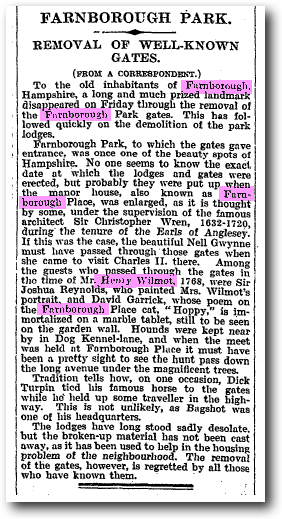
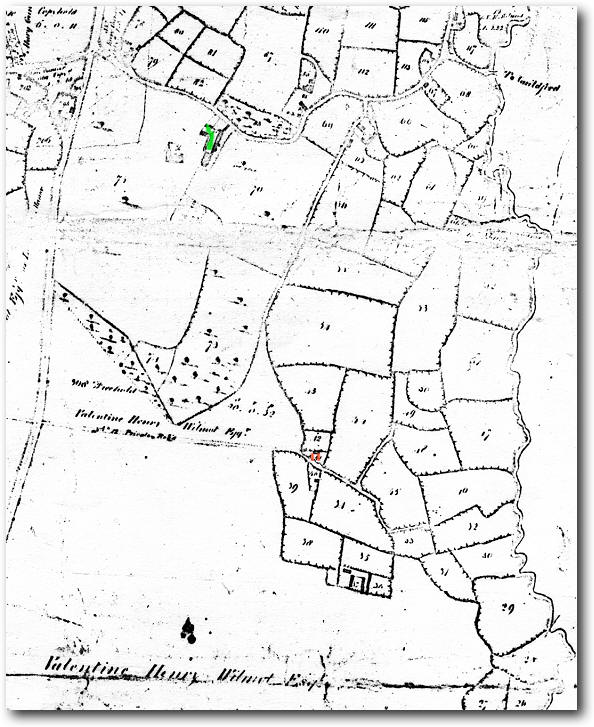





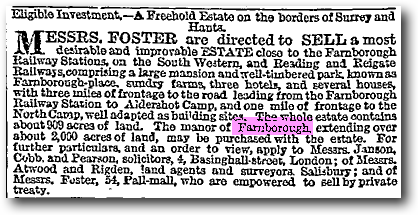
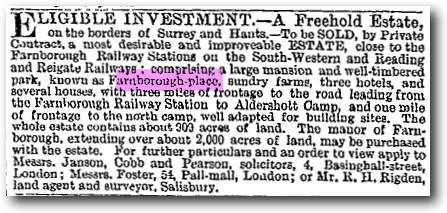
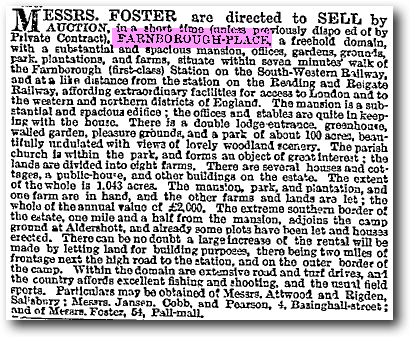
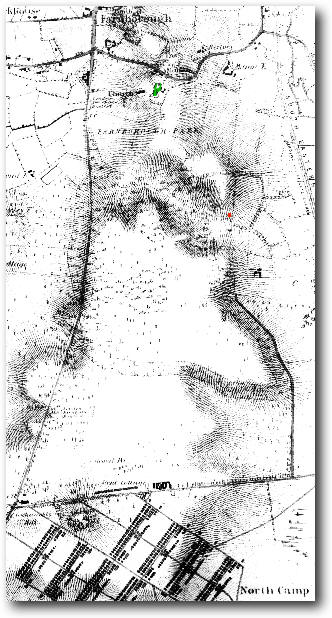
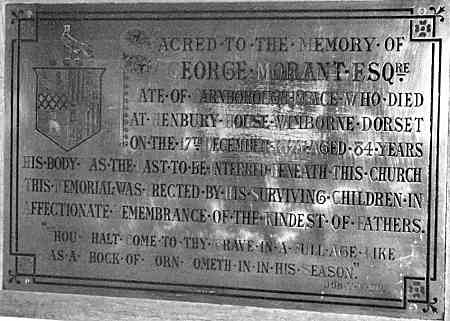
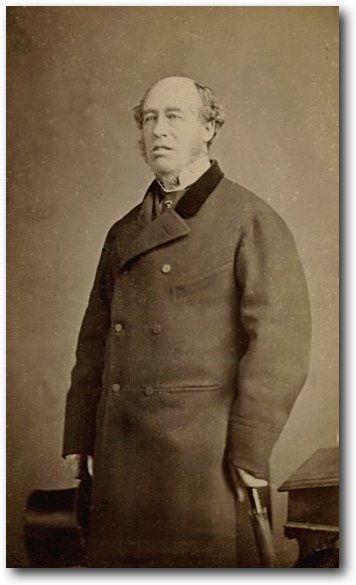 1861:
Around 1861 much of the Farnborough Park land was bought by a St Johns Wood based entrepreneur called William Knell from the sale of land belonging to
Farnborough Place
1861:
Around 1861 much of the Farnborough Park land was bought by a St Johns Wood based entrepreneur called William Knell from the sale of land belonging to
Farnborough Place